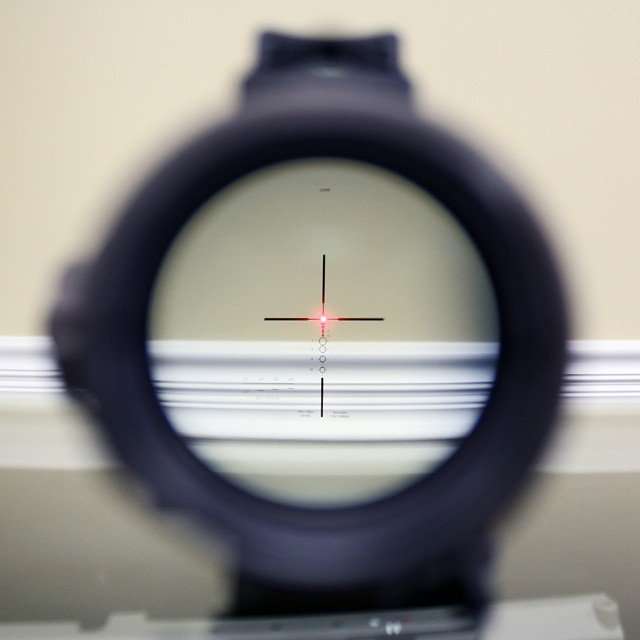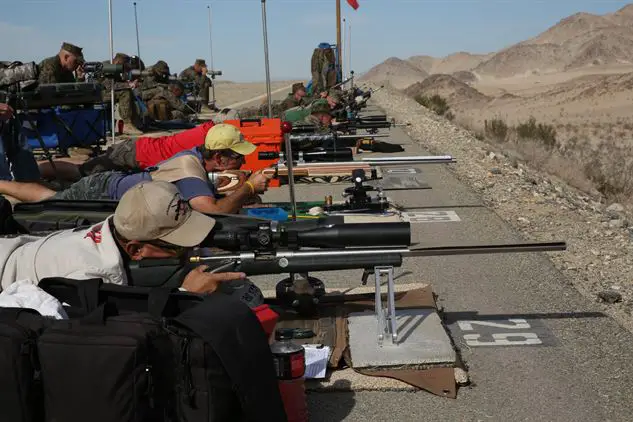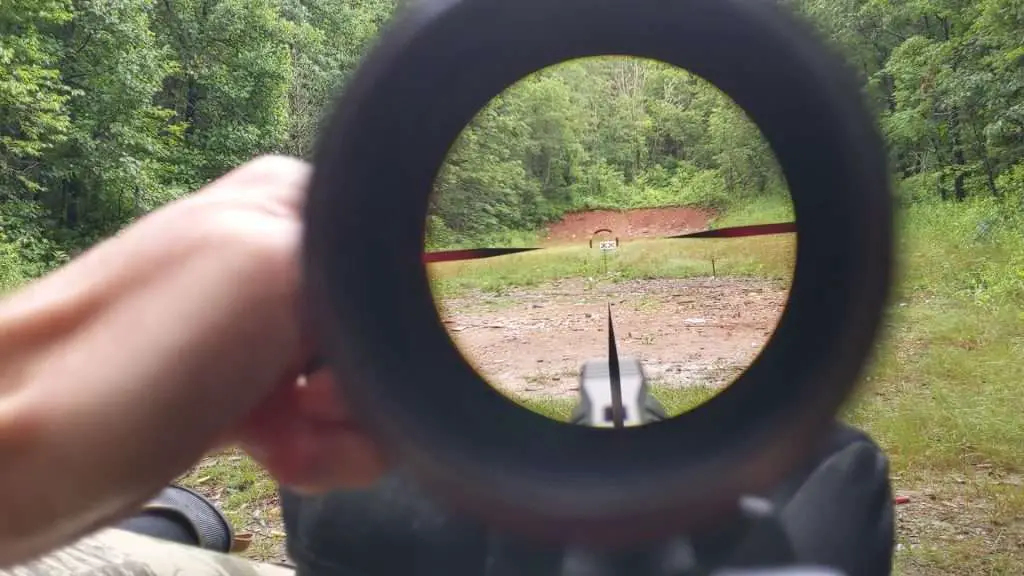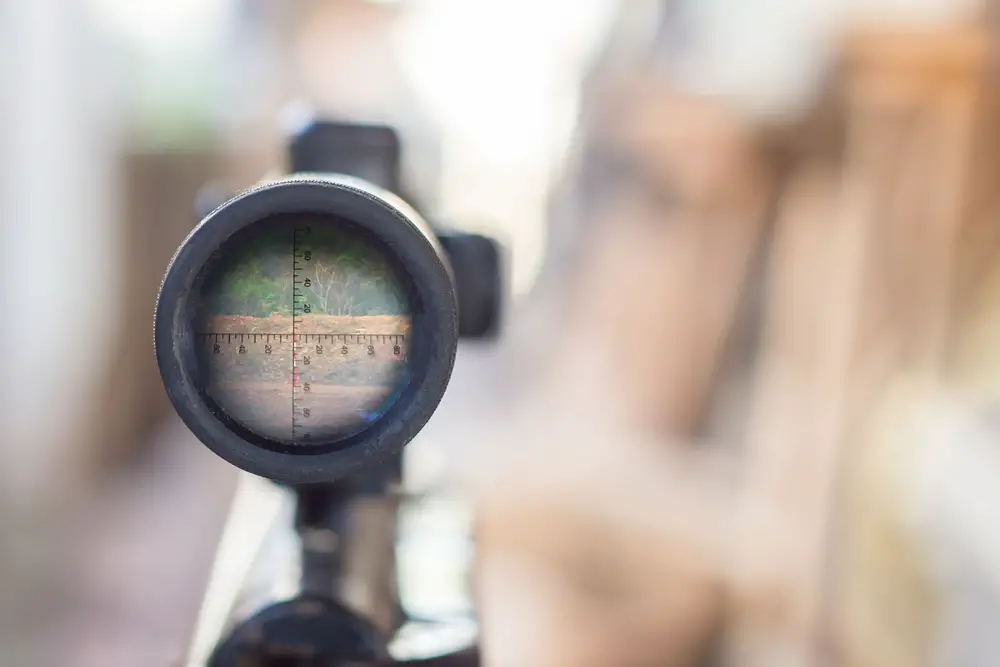
For shooting enthusiasts and hunters, mastering the art of aiming is a crucial skill. One tool that can significantly improve long-distance aiming accuracy is the mil-dot reticle. This sophisticated scope reticle, originally developed for military use, is now increasingly popular among civilian shooters for its precision and versatility. But what exactly is a mil-dot reticle, and how does one use it effectively? Let’s delve into the intricacies of this system. How to use a mil-dot reticle guide starts now!
Table of Contents
What is Mil-Dot?
A mil-dot reticle is a pattern on a riflescope’s lens that assists in estimating distances, compensating for wind drift or bullet drop, and improving overall shooting accuracy. The term “mil-dot” refers to the pattern’s two main components: milliradians (mils) and dots.
In this context, a mil is not a measurement of length but an angular measurement. The pattern consists of a standard crosshair design with dots placed along the lines at one mil intervals. This matrix provides a reference system that a shooter can use to estimate the distance to a target or adjust for wind drift and bullet drop.
Why are Mils Useful?

Mils provide a system of measurement that allows precision shooting at various distances. This standard, used by military and law enforcement snipers worldwide, gives shooters a consistent means of estimating range and compensating for bullet drop. Now, let’s move on to the specifics of using a mil-dot scope.
How to Use a Mil-Dot Reticle
Using a mil-dot reticle involves two primary steps: measuring the target and estimating the range of the target.
Measuring the Target Size
The first step in using a mil-dot scope is measuring the target size. Using the mil-dots on your reticle, you can estimate the size of the target. Each dot’s center on the horizontal and vertical axis of the reticle is exactly one mil apart. For instance, if a target lines up with two dots on your reticle, it measures approximately two mils.
Estimating Range to Target
Once you know the size of your target, you can estimate the distance to your target using a simple formula: (Size of target (in yards) x 1000) / size of target (in mils) = Range in yards. It might take some practice, but with time, it becomes second nature.
It’s important to note that this calculation assumes the target size is known or can be reliably estimated. For instance, if you know a deer stands approximately 3 feet tall (1 yard), and the deer measures 2 mils in your scope, the formula would be (1 yard x 1,000) / 2 = 500 yards away.
Using a mil-dot reticle effectively takes practice. It’s an excellent idea to spend time at a range, working on measuring and estimating distances before you rely on these skills in the field.
Here’s a tool that’s extremely useful for doing long-range calculations.
- No conversion of estimated target size from inches into decimal equivalent of yards is necessary, as the Target Size Scale is in increments of feet and inches.
- No entry of data or operations through a keypad is necessary, as the device is purely analog and only requires the alignment of figures on scales.
- No memorization of formulae is necessary, as the correct formulae are built into the scales.
Compensating for Bullet Drop
Once the target’s distance is known, the mil-dot system can also help shooters compensate for bullet drop. The dots beneath the central crosshair can be used as a reference point for where the bullet will land at different distances. By adjusting the scope to the correct mil-dot line, you can aim accurately at targets at various ranges without needing to adjust your scope each time.
Mil-Dot Reticle: First Focal Plane or Second Focal Plane

When it comes to estimating the effective range of a second focal plane riflescope, several factors come into play. The most crucial factors include the magnification power of the scope, the size of the target, the reticle design, and the shooter’s skill level. It’s important to note that the second focal plane (SFP) reticle does not change size as you adjust the magnification, which affects range estimation.
With an SFP riflescope, the reticle remains the same size, regardless of the magnification setting. This means that the subtensions on the reticle, such as hash marks or mil dots, are only accurate at a specific magnification level, typically the highest magnification. If you change the magnification, the subtensions will no longer correspond accurately to the target’s size or distance.
To estimate the range effectively with an SFP riflescope, you need to know the specific subtension values for the reticle at the scope’s highest magnification. Manufacturers often provide this information in the scope’s user manual or on their website. These subtension values can be used to estimate range when the target size is known.
Using the subtensions, you can compare the size of the target or specific features of the target (such as its height or width) to the corresponding subtension marks on the reticle. By knowing the size of the target and the subtension values, you can estimate the range to the target based on the reticle markings.

However, keep in mind that range estimation using a second focal plane riflescope can be challenging and less precise compared to a first focal plane (FFP) riflescope, where the reticle subtensions scale with the magnification. With an SFP scope, accurate range estimation requires you to set the magnification correctly, which may not always be practical or convenient during dynamic shooting situations.
In summary, range estimation with a second focal plane riflescope requires knowledge of the subtension values at the highest magnification setting and an understanding of how those subtensions relate to the size of the target. However, due to the limitations of an SFP reticle, it may not provide the same level of accuracy and ease of use as a first focal plane riflescope for range estimation.
Conclusion
The mil-dot reticle is a powerful tool for improving long-distance shooting accuracy. While it may seem complicated at first, with some practice and a good understanding of the concepts, using a mil-dot reticle can become second nature. It offers shooters a versatile and precise method for estimating distances and adjusting shots, making it an invaluable addition to any shooter’s skill set. Whether you’re a hunter, a competitive shooter, or just enjoy shooting as a hobby, mastering the mil-dot reticle is a step towards becoming a more proficient marksman.
Last update on 2024-04-24 / Images from Amazon Product API

